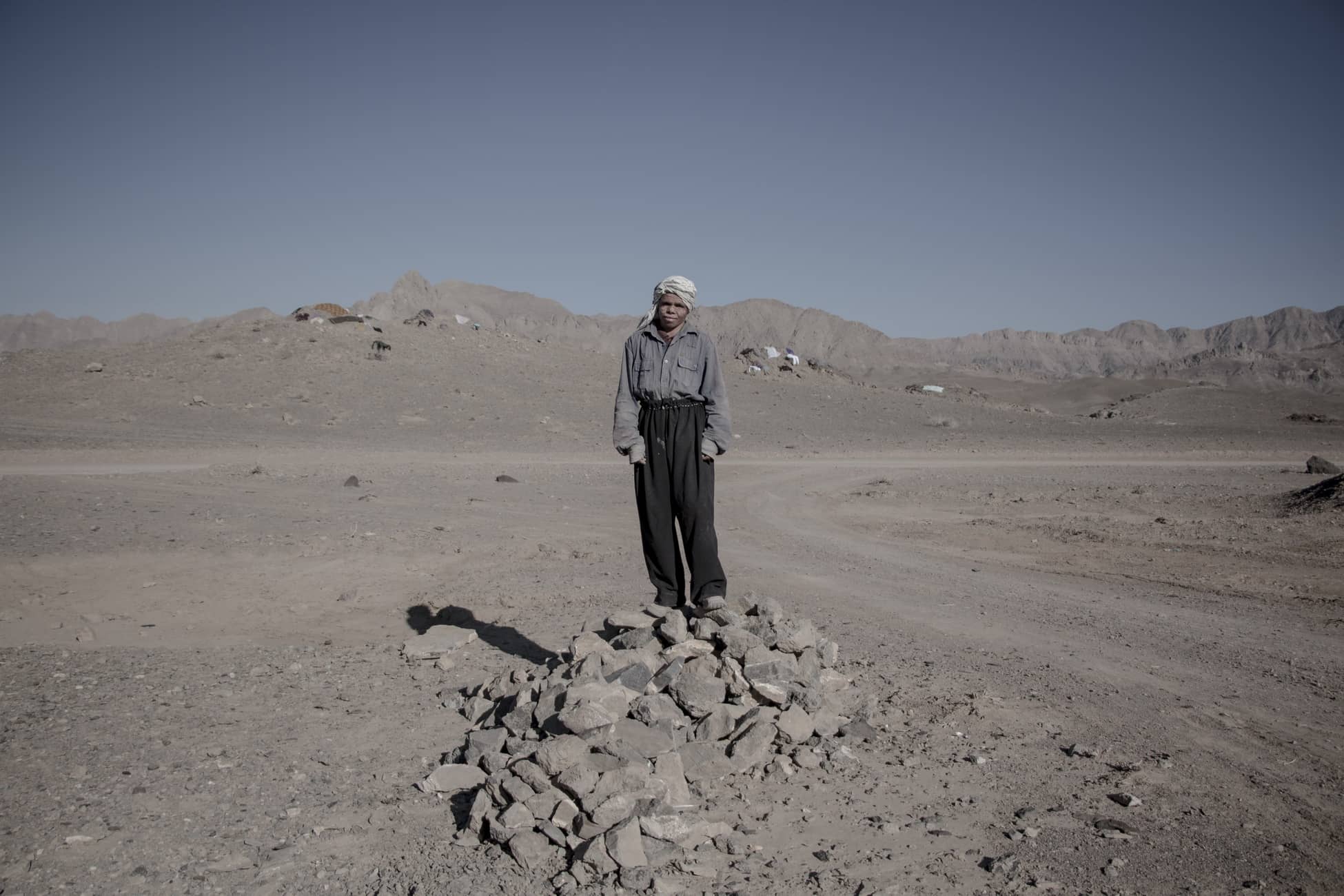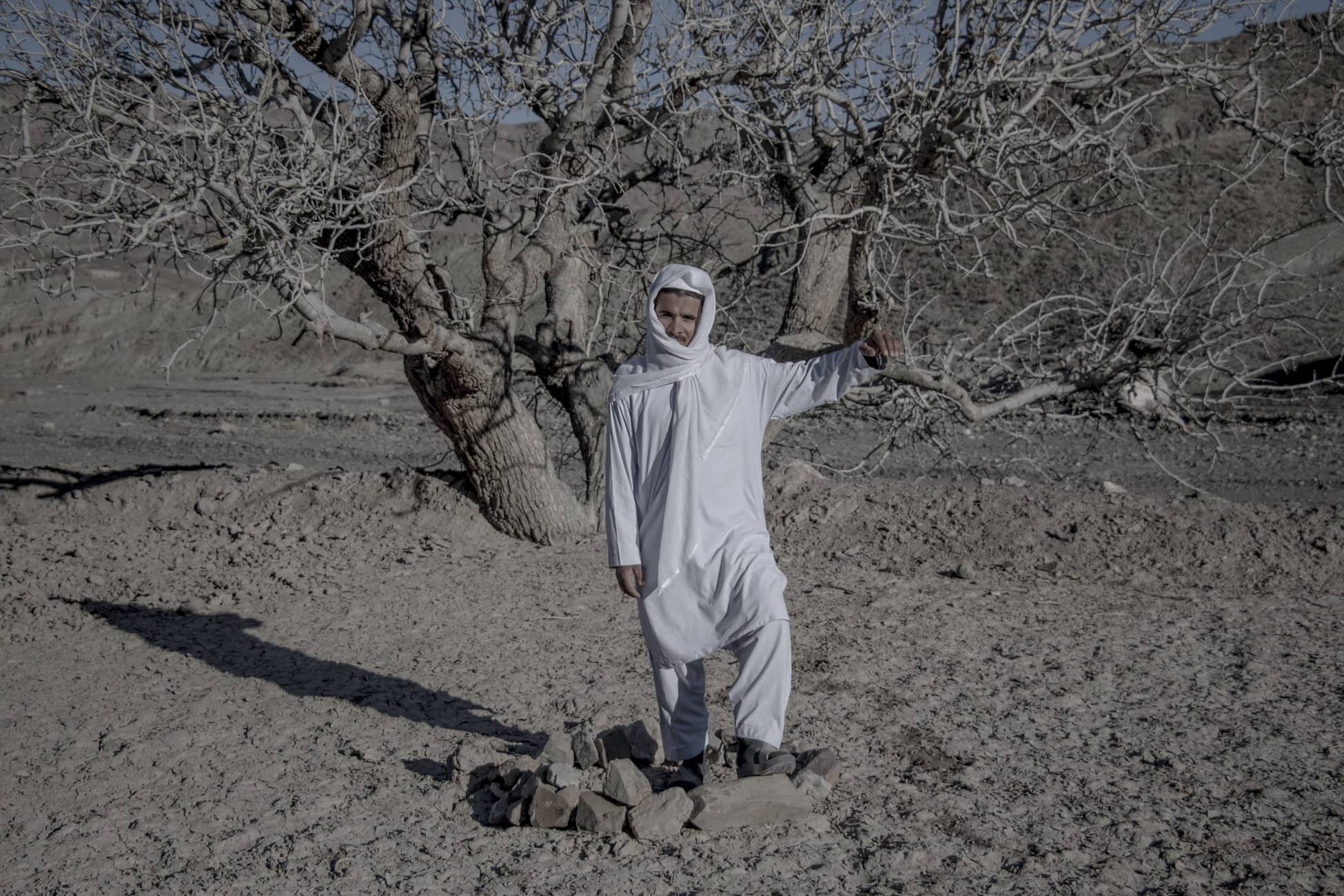In this current series of works, Azin Haghighi dedicates himself to exploring the narratives of peoples and places whose stories have largely gone underrepresented, perhaps even untold. This exploration of the state of being forgotten and abandoned is the unifying element, which runs like a thread through his photographic works, creating an arc between the thematically different subjects. Indeed, Haghighi’s works can be understood as an archive of similar stories and similar fates, which the photographer has carefully juxtaposed and linked together to create a greater narrative of loss and forgetting. For example, the artist portrays mine workers in their dangerous working environments where they not only face the risks associated with their physical work – such as falling in the mine itself – but are also endangered by a set of financial consequences emerging from the privatization of mines in Iran and the uncontrolled import of coal from China and Australia. Both the livelihoods of the miners and their way of life are simultaneously at risk. In a similar vein, Haghighi captures landscapes and places facing threatening and often critical situations. For instance, he photographs Lake Urmia, the sixth largest saltwater lake in the world and an important ecosystem for this region of Iran, but one that is increasingly endangered due to salinization and drought. We might ask the question as to what stories and memories will disappear with this lake. READ MORE…
_ Baharak Omidfard

Shokrollah, 20, is a nomadic man from Chahzard in South Khorasan. He is a herdsman. Standing on a piece of symbolically marked stone, he says that he wishes he were a landowner since the nomadic people cannot own land as they migrate from time to time.

Abdolghani, 38, is a stockman from the nomadic Chahzard people in South Khorasan. He has migrated into Khorasan from Baluchistan after his land became useless as a result of drought. He is standing on a stone block that demarcates his land.

Ibrahim comes from Lojang, a village in South Khorasan. As he is illiterate, he does not know how old he is; he only says that he is over 30. There is no gas, electricity or water in this village. Ibrahim, together with other villagers, has demarcated their land along the river in case the drought is over so they can do agriculture. He has not had a job for years and lives on the aid he receives from NGOs and the Imdad Committee (a charity that helps poor people financially).

Jalil is from the village Golney in South Khorasan. He suffers from a skin disease and cannot speak very well. It is not clear what he is suffering from, as the people close to him speak either contradictorily about it, are not aware of the situation or believe that he could receive financial support if they show that his condition is serious. The area of Jalil’s land is larger than anyone else’s. He inherited the land from his ancestors and this has made him the richest man in the village of 65 people. Because of his illness and the deformed look of his face, no woman is willing to marry him.

Abdurrahman, 20, comes from Kafas, a village in South Khorasan. He receives religious education at the Makhunik religious school near their village and is now a student. His inherited land is about two square metres and is located on a dirt road. He wishes that his land is situated on the road so that he can sell it to the transport and road organisation to get a good amount of money. It should be noted that his demarcated land has no official title deed.

Mahmood, 22, from Kafas, a village in South Khorasan. He receives religious education at the Makhunik religious school near their village and is now a student. He owns a one-square-metre plot and is about to get married. He says he wishes his future wife would stay close to him forever. The photographer asked him what he would do if his future wife was there at that moment. He raised his hand and replied that he would take a snapshot with her.

Rahman, 19, comes from Kafas, a village in South Khorasan. He receives religious education at the Makhunik religious school near their village and is now a student. He picks up a piece of stone and says that these stones are no longer of any value because the land is useless after the river dried up.

Sheikh, 70, is from the village Tajmir in South Khorasan. He is a stockman and has two wives from whom he has eight daughters. He owns a large amount of land. However, according to their tradition, singles and unmarried daughters do not receive inheritance from their fathers. He says that his lands are useless to him because of the drought, adding that he has no son to bequeath the land to. The villagers know this, and so they move the stones with which Sheikh has demarcated his land for their own purposes.

Shah Mohammad, 57, from Tajmir village in South Khorasan. He is a stockman and has three children from his two wives. He said nothing, but he has three pieces of three–square meter land.

According to tradition in this area, the land of a married man is his wife’s mahr or dowry and thus belongs to her. One of the migrant women from Kalateh-e-Beluch, a village in Balochistan, who migrated to South Khorasan, took possession of this land after the death of her husband. However, due to the strong gender bigotry in the villages of this region, women are not allowed to be photographed. The photographer did not manage to take a photo of the landowner.